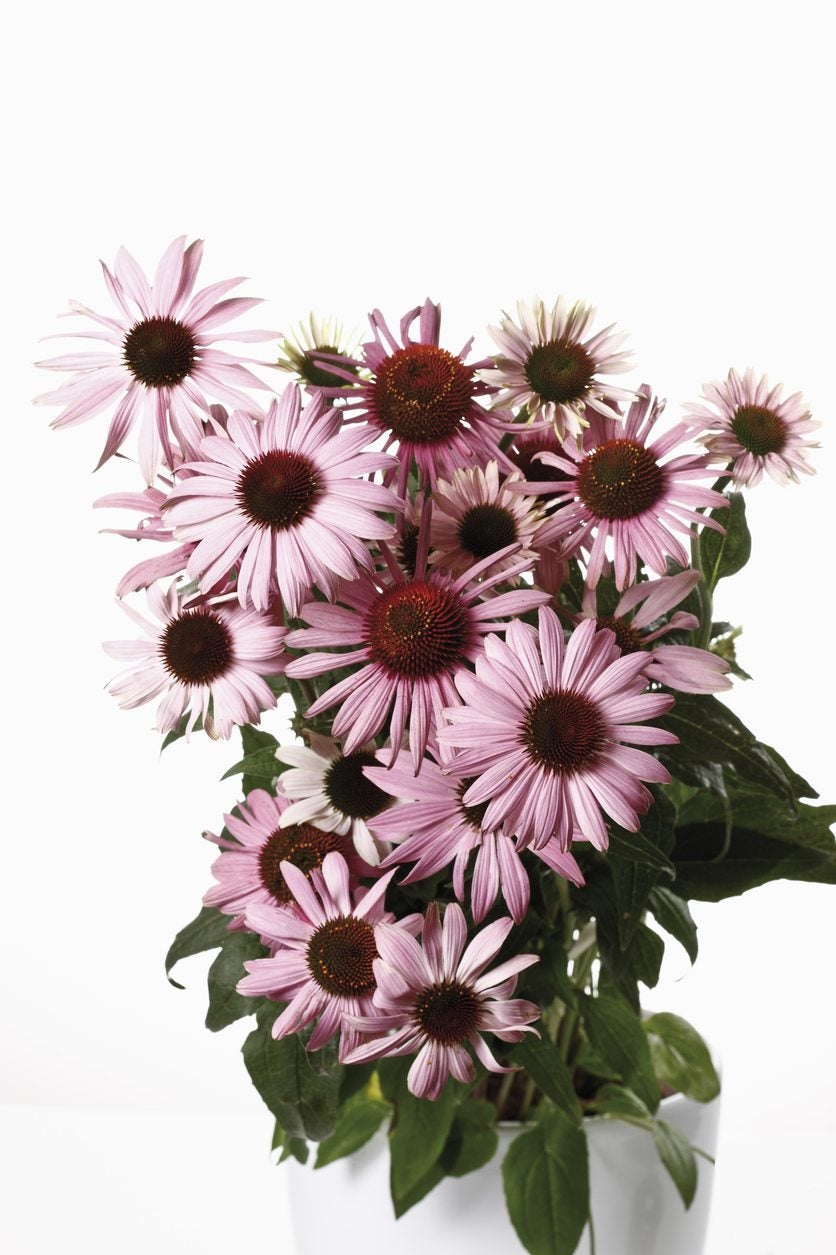Coneflowers In A Pot – Tips On Caring For Container Grown Coneflowers


Coneflowers, also frequently known as Echinacea, are very popular, colorful, flowering perennials. Producing very distinctive, big, and daisy-like flowers in shades of red to pink to white with hard, spiky centers, these flowers are both hardy and attractive to pollinators. In other words, there’s no reason not to plant them in your garden. What about containers? If you don’t have the space for a garden bed, will coneflowers grow just as well on a patio or balcony? Keep reading to learn more about how to grow coneflowers in a pot.
Can You Grow Coneflowers in Containers?
It is possible to grow coneflowers in a pot, as long as it’s a big one. Coneflowers are naturally drought tolerant, which is good news for containers since they dry out much more quickly than garden beds. That being said, you don’t want your container grown coneflowers to dry out too much. Never let the soil get soggy but try to water them whenever the top of the soil dries out. To cut down on the need for water, and to give the plant plenty of room to establish itself, opt for as big a container as possible. Coneflowers are perennials, and they should come back bigger and better every spring if allowed. Due to this, you will probably have to divide them and move them to new containers every few years.
How to Grow Coneflowers in Containers
If you’re starting your coneflowers from seed, simply sow the seed in the container in autumn and leave it outside. This will naturally provide the stratification the seeds need to germinate. If you’re planting a seedling, make sure to transplant it with the soil at the same level – you don’t want to cover up the crown. Feed your container grown coneflowers with a 10-10-10 fertilizer. Place the container in an area that receives full sun. Coneflowers are hardy in USDA zones 3 through 9, which means they should be hardy in containers down to zone 5. You can bury the container in a hole in the ground or build up mulch around it for added winter protection.
Sign up for the Gardening Know How newsletter today and receive a free copy of our e-book "How to Grow Delicious Tomatoes".

The only child of a horticulturist and an English teacher, Liz Baessler was destined to become a gardening editor. She has been with Gardening Know how since 2015, and a Senior Editor since 2020. She holds a BA in English from Brandeis University and an MA in English from the University of Geneva, Switzerland. After years of gardening in containers and community garden plots, she finally has a backyard of her own, which she is systematically filling with vegetables and flowers.